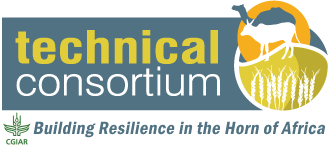Please find our latest publications arranged into three key research areas, for your convenience. View all our publications.
INDICATOR SELECTION
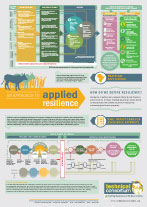
The Technical Consortium provides an approach to applied resilience, using proposed system indicators in conjunction with existing human development indices to monitor and evaluate the impact of investments. These indicators operate over a Resilience Pathway, which looks beyond a single project timeline of 3-5 years, instead forecasting a longer 20-year time line and the impact multiple interventions have on enhancing resilience.
DECISION ANALYSIS MODELLING

The Technical Consortium and the World Agroforestry Centre (ICRAF), with the technical assistance of Hubbard Decision Research (HDR), are undertaking the building of a decision analysis model, the aim of which is to understand resilience under the uncertainty and data deficiencies which exist. This approach draws from decision analysis procedures and techniques of Applied Information Economics (AIE).
SPATIAL TOOL SUMMARY REPORT

The term ‘resilience’ has gained significant traction within the agencies, governments, researchers and practitioners working across the development and humanitarian realm.
DATA GAPS IN THE HOA
Publications will be made available shortly
DATA CATALOGUE

The Technical Consortium has been given the mandate to establish catalogues containing baseline datasets for the IGAD member state countries. These catalogues will provide baseline data and needed to support evaluation of indicators, for which there is general agreement of a cumulative contribution towards "resilience" to drought in the Horn of Africa.
SYSTEMS APPROACH
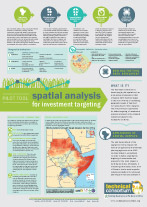
Using a systems approach to defining resilience in the Horn of Africa, the Technical Consortium has developed a pilot tool with which to provide spatial analyses for investment targeting.
-

REPORT 1
Kenya Ending Drought Emergencies Policy Review:Scenarios for Building Resilience in the ASALs
Elizabeth Carabine, Marie-Agnes Jouanjean and Josephine Tsui
REPORT 3
The Effect of Livelihood Diversity on Recovery and Shock Impact in Ethiopia, Kenya and Uganda
Suzanne Nelson, Tim Frankenberger, Mark Langworthy, Tim Finan and Tom Bower
REPORT 4
The Effects of Social Capital on Resilience Capacity: Evidence from Ethiopia, Kenya, Uganda, Niger and Burkina Faso
Lisa Woodson, Tim Frankenberger, Lisa Smith, Mark Langworthy and Carrie Presnall
REPORT 5
The Influence of Subjective and Psycho-social Factors on People’s Resilience: Conceptual Framework and Empirical Evidence
Christophe Béné, Tim Frankenberger, Mark Langworthy, Monica Mueller, and Stephanie Martin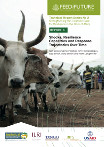
REPORT 6
Shocks, Resilience Capacities and Response Trajectories Over Time
Tom Bower, Carrie Presnall, Tim Frankenberger, Lisa Smith, Vicky Brown and Mark Langworthy
REPORT 7
Classification of Indicators for Resilience Analysis: An Assessment of Selected Data Sources Focused on Arid and Semi-Arid Lands
Mark Constas, Joanna Upton, Erwin Knippenberg and Katie Downie
REPORT 8
Maintaining Resilience in the ASALs of Kenya: A Perspective on Stocking Rates in Extensive Livestock Systems
Siwa Msangi and Sara Signorelli
REPORT 9
Malnutrition and Climate Patterns in the ASALs of Kenya: A Resilience Analysis based on a Pseudo-panel Dataset
Sara Signorelli, Carlo Azzarri and Cleo Roberts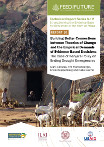
REPORT 10
Building Better Connections between Theories of Change and the Empirical Demands of Evidence-Based Decisions: The Case of Kenya’s Policy on Ending Drought Emergencies
Mark Constas, Tim Frankenberger, Erwin Knippenberg and Katie Downie
REPORT 11
Open Data Infrastructure for Resilience Analysis: Implementation, Examples, and Case Studies in Kenya
Jawoo Koo, Carlo Azzarri, Sara Signorelli, Maria Comanescu, and Zhe Guo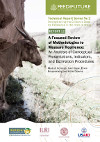
REPORT 12
A Focused Review of Methodologies to Measure Resilience: An Analysis of Conceptual Presentations, Indicators, and Estimation Procedures
Mark A. Constas, Jenn Cisse, Erwin Knippenberg and Katie Downie
-

REPORT 5
Gaps in spatial data for social, ecological and economic systems
Rob Davies and Tim Wroblewski
REPORT 4
Modeling livestock feed and fodder availablityin the ASALs of the IGAD region
Rob Davies and Tim Wroblewski
REPORT 8
Modeling resilience with applied information economics (AIE)
Doug Hubbard, Matt Millar
REPORT 1
Preliminary review of datasets to inform the development of IGAD MS baselines
Sabrina Chesterman and Katie Downie
REPORT 12
Modeling potential livestock losses and vulnerability due to drought in the IGAD region
Rob Davies and Tim Wroblewski
REPORT 13
Spatial analysis for investment targeting: pilot tool
Rob Davies and Tim Wroblewski
REPORT 9
Assessing resilience to drought: defining drought and reviewing trends in the Horn of Africa
Joshua Busby and Todd Smith
REPORT 10
The application of decision analysis modelling for investment targeting
Eike Luedeling, Keith Shepherd, Jan de Leeuw and Katie Downie
REPORT 6
The creation of a household resilience index using limited data from the IGAD region
Joshua Busby and Todd Smith
-

BRIEF 1
Natural resource management in the drylands in the Horn of Africa
Fiona Flintan, Roy Behnke, Constance Neely
BRIEF 2
Market access and trade issues affecting the drylands in the Horn of Africa
Yacob Aklilu, Peter D. Little, Hussein Mahmoud and John McPeak
BRIEF 3
Livelihoods and basic service support in the drylands of the Horn of Africa
John Morton and Carol Kerven
BRIEF 4
Disaster risk reduction management in the drylands in the Horn of Africa
Catherine Fitzgibbon and Alexandra Crosskey
BRIEF 5
Knowledge management and research for resilience in the drylands of the Horn of Africa
Vanessa Tilstone, Polly Ericksen, Constance Neely, Jonathan Davies and Katie Downie
BRIEF 6
Conflict resolution and peace building in the drylands in the Horn of Africa
Sara Pavanello and Patta Scott-Villiers
RESOURCES
For a range of more general resources from a variety of research institutions, please access our Resilience Library.



